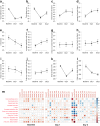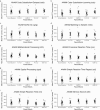Effect of ketone monoester supplementation on elite operators' mountaineering training
- PMID: 39290617
- PMCID: PMC11405315
- DOI: 10.3389/fphys.2024.1411421
Effect of ketone monoester supplementation on elite operators' mountaineering training
Abstract
Introduction: Special Operations Forces (SOF) often conduct operations in physiologically stressful environments such as severe heat, cold, or hypoxia, which can induce decreases in a variety of cognitive abilities. Given the promising empirical demonstration of the efficacy of exogenous ketone monoester (KME) supplementation in attenuating cognitive performance decrease during hypoxia at rest in a laboratory setting, we conducted a real-world, field experiment examining KME's efficacy during high-altitude mountaineering, an austere environment in which US SOF have conducted increasing numbers of operations over the past two decades.
Methods: Specifically, 34 students and cadre at the US Army 10th Special Forces Group Special Operations Advanced Mountaineering School (SOAMS) participated in a randomized, double-blind, placebo (PLA)-controlled crossover trial (KME vs. PLA) over 2 days of tactical mountain operations training. The participants ascended from 7,500 ft in altitude (basecamp) to 12,460 ft on 1 day and 13,627 ft the other day (in randomized order), while performing various training activities inducing high physical and cognitive loads over 8-12 h, and consumed six doses of KME or PLA 2-3 h apart throughout each training day.
Results and discussion: While KME increased blood ketone levels and decreased glucose levels, there were no clear indications that the elevated ketone level enhanced physical or cognitive performance. KME also produced a greater incidence of heartburn, nausea, and vomiting. In these elite operators, high-altitude mountaineering had a limited impact on cognitive performance, and KME supplementation did not demonstrate any benefit.
Keywords: cognitive performance; high altitude; hypobaric hypoxia; military; resilience; β-hydroxybutyrate.
Copyright © 2024 Miyatsu, McAdam, Coleman, Chappe, Tuggle, McClure and Bamman.
Conflict of interest statement
The authors declare that the research was conducted in the absence of any commercial or financial relationships that could be construed as a potential conflict of interest.
Figures









References
-
- Bleeker J. C., Visser G., Clarke K., Ferdinandusse S., De Haan F. H., Houtkooper R. H., et al. (2020). Nutritional ketosis improves exercise metabolism in patients with very long chain acyl CoA dehydrogenase deficiency. J. Inherit. Metabolic Dis. 43 (4), 787–799. 10.1002/jimd.12217 - DOI - PMC - PubMed
-
- Burnham K. P., Anderson D. R. (2004). Model selection and multimodel inference New York: Springer. 10.1007/b97636 - DOI
LinkOut - more resources
Full Text Sources
Miscellaneous

